Ancient ruins around the world you must see once in your lifetime
Spectacular sites to explore
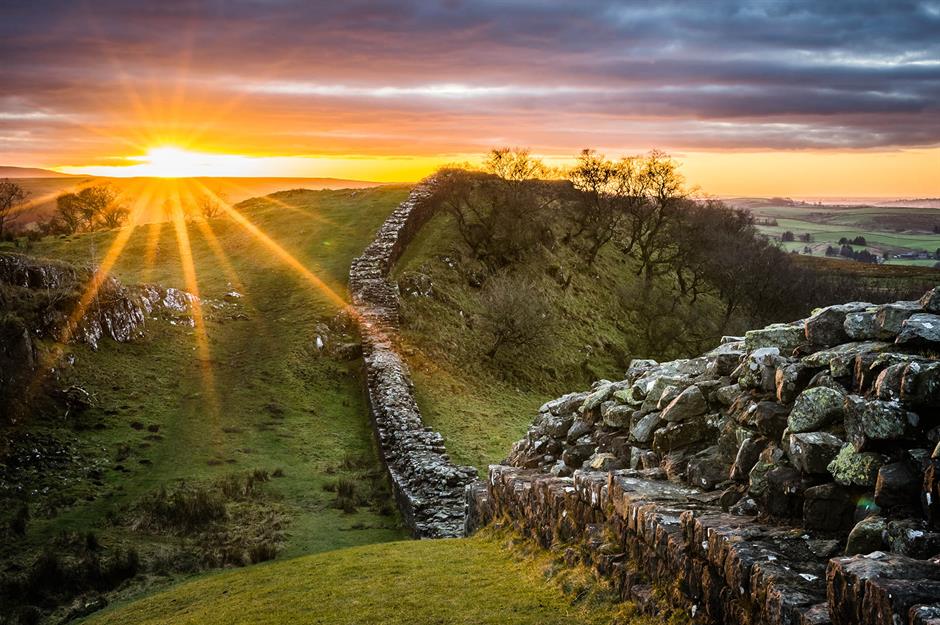
From the Roman and Greek relics of Europe to the Maya sites of modern Mexico and the Indigenous dwellings of America, these breathtaking ruins offer a fascinating insight into how some of the world’s oldest cultures lived.
Click through the gallery to see 33 ancient sites that any history lover should visit at least once in their lifetime...
Chichen Itza, Mexico
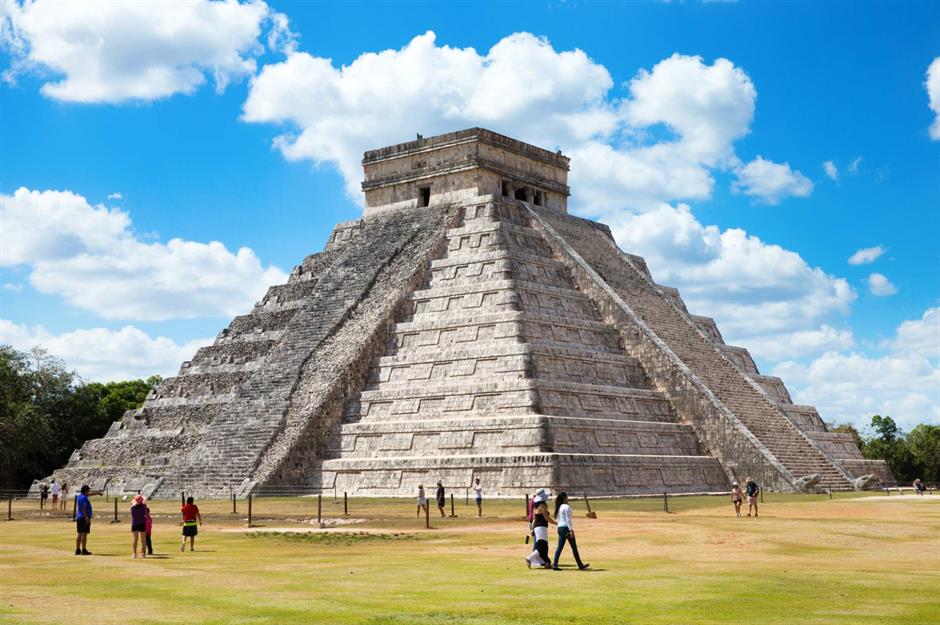
Not far from the balmy beaches and cenotes of Mexico’s Yucatan Peninsula, you’ll find one of the finest surviving examples of Maya architecture. The site served as the political and economic hub of Maya civilisation between around AD 750 and 1100, and now these impressive ruins offer a unique window into the culture, which shows evidence of amazing astronomical and mathematical skills.
Visit the El Castillo temple (pictured) at sunset, and you’ll notice how the shadows cleverly create the illusion of a snake creeping down the staircase. The site gets busy, so it's best to set off early – and be sure to book a guided tour with a Maya guide.
Acropolis, Greece

Located on a rocky hill that towers over Athens, the Acropolis is home to some of antiquity's greatest buildings, including the iconic Parthenon (pictured). The Doric temple was one of the first monuments built here when it was constructed between 447 and 438 BC. It was dedicated to Athena Parthenos, the patron of the city.
But don't just visit the Parthenon – be sure to check out the Erechtheum temple, the Temple of Athena Nike and the Odeon of Herodes Atticus theatre as well.
Borobudur, Indonesia
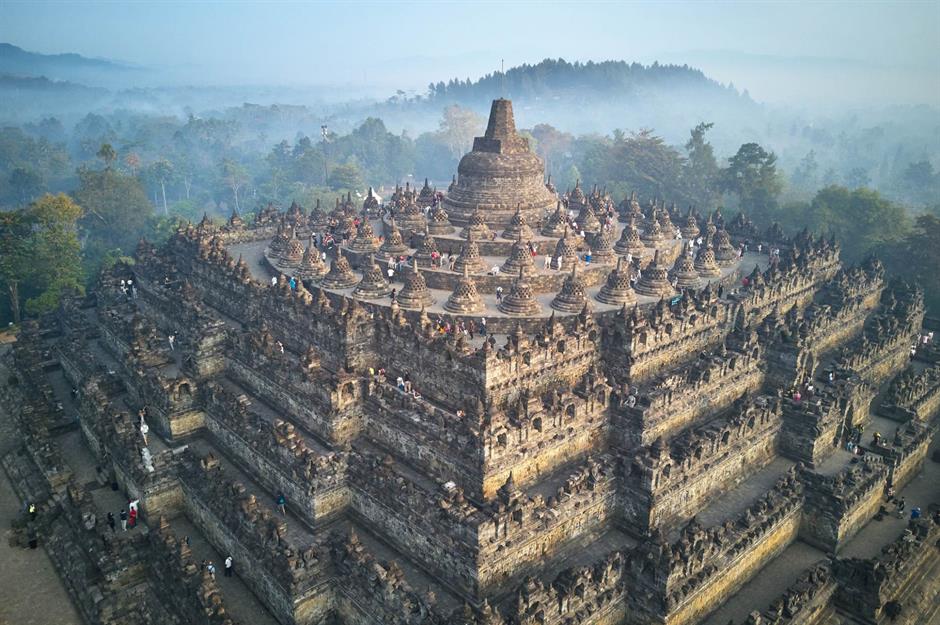
You’d be hard-pressed to find a more stunning sight than sunrise over Borobudur, with Mount Merapi rising up in the background. This impressive structure, located in Central Java, is the world’s largest Buddhist temple and was built between AD 778 and 850, under the Shailendra dynasty.
It’s thought that the ancient kingdom was used for only two centuries before volcanic activity from Merapi, between AD 928 and 1006, led monks to abandon the sacred site. Today, it’s best visited with a guide.
Tikal, Guatemala
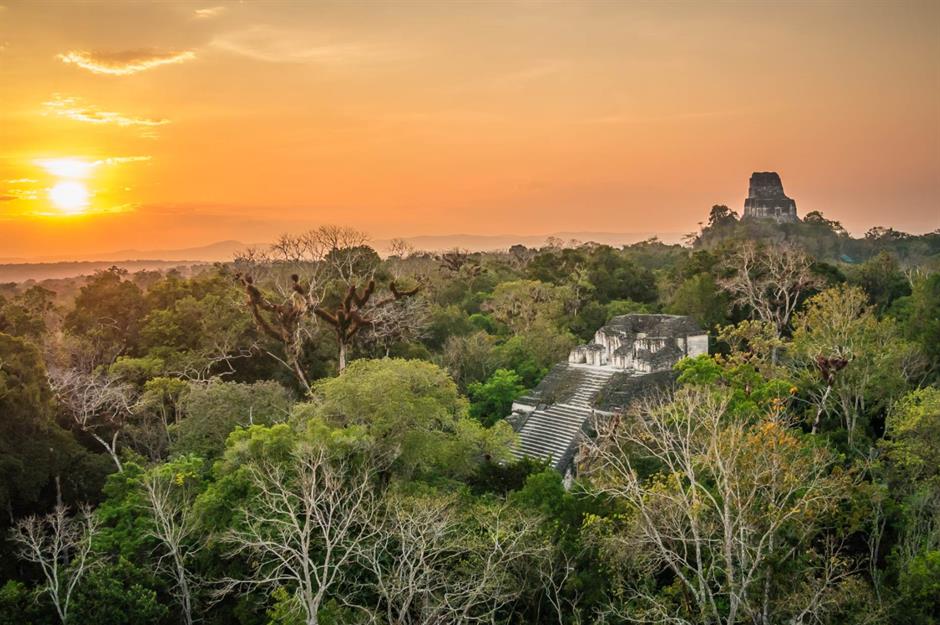
Surrounded by the breathtaking Peten rainforest, the legendary pyramids of Tikal were built between around AD 300 and 900. This Maya city, which was known as Yax Mutal, was among the most powerful kingdoms ever to exist in Mesoamerica. There are six temples here in total, as well as plazas, pyramids and Maya art and hieroglyphics.
The tallest, Pyramid IV, measures 213 feet (63m) from the ground to its pinnacle and can be climbed, offering awe-inspiring views of the surrounding structures and rainforest. Be sure to book a guided tour to get the best possible experience, and go as early as you can to beat the crowds.
Colosseum, Italy
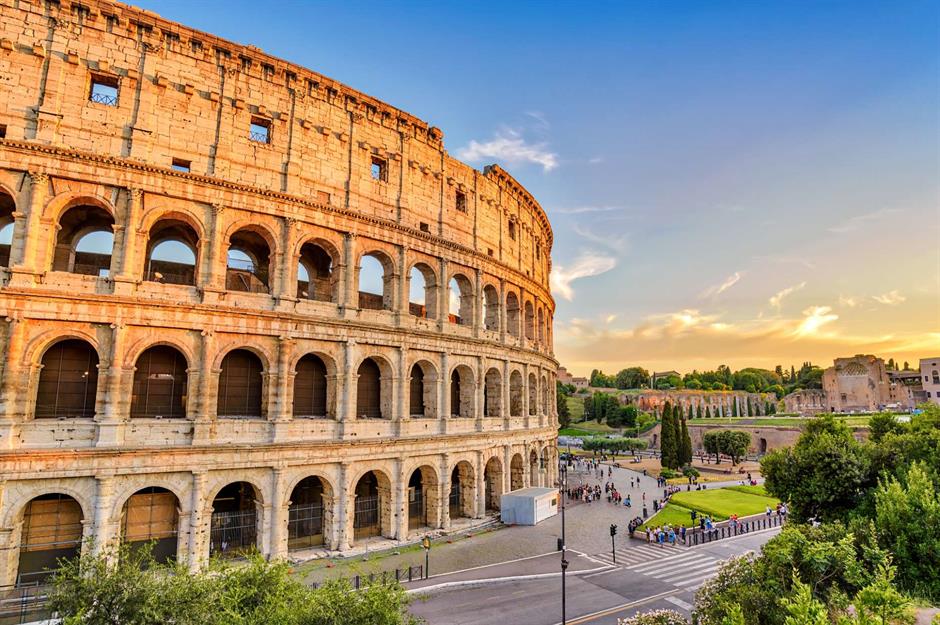
Arguably the most famous Roman ruin in the world, the Colosseum is the largest amphitheatre ever built. It took around eight years to construct and it was intended as a gift to the Roman people from emperor Vespasian, who ruled from AD 69 to 79. In its heyday, it could hold up to 80,000 spectators.
Yet the Colosseum is also a reminder of the brutality of the Roman Empire; it's thought that around 60,000 enslaved peoples participated in building the monumental structure, while an estimated 400,000 people died here either in executions or as gladiators.
Stonehenge, England, UK
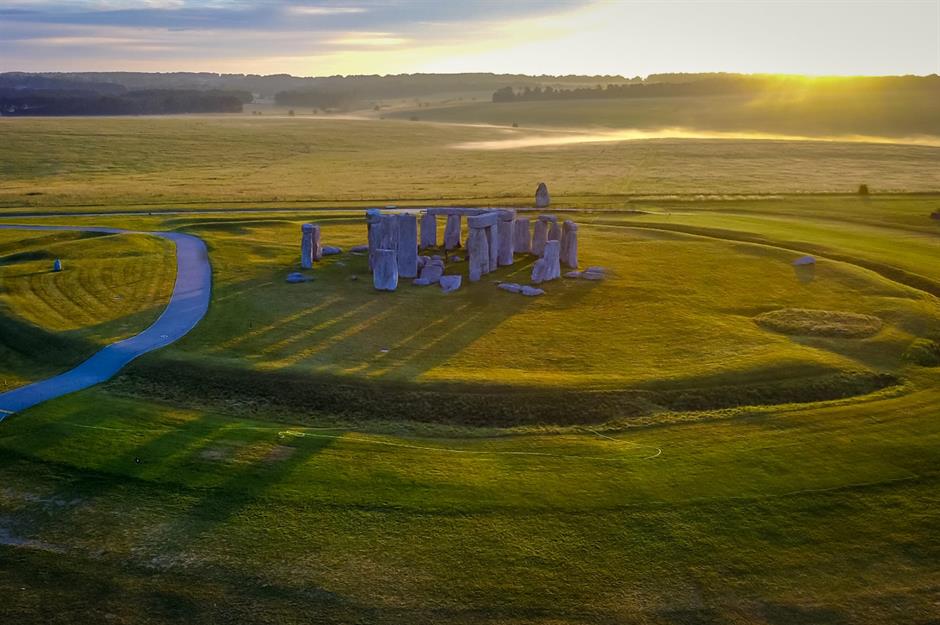
It’s hard not to be awestruck by the sight of this mighty stone circle rising from Salisbury Plain in southwest England. The most famous prehistoric monument in Europe, Stonehenge was erected in the late Neolithic period in around 2500 BC and is now part of a UNESCO World Heritage Site, along with nearby Avebury.
While it's widely known that Stonehenge's smaller bluestones came from Wales, evidence has suggested that part of the famous stone circle was first built at a site called Waun Mawn near the Pembrokeshire Coast – around 150 miles (241km) from Stonehenge – before it was dismantled and rebuilt in Wiltshire.
Hampi, India
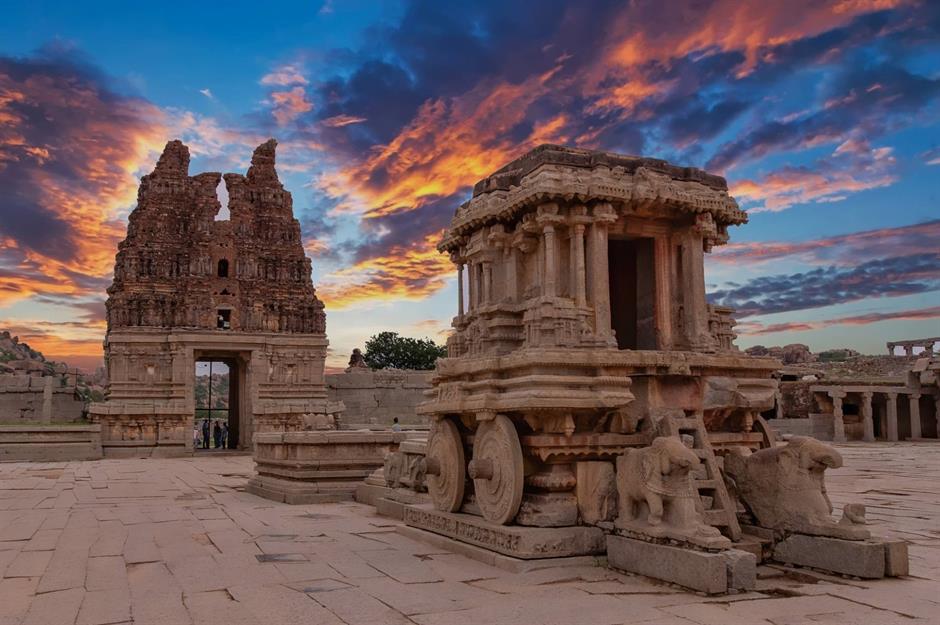
Located near Bangalore in southern India, the magnificent ruins of Hampi are a sight to behold. This legendary kingdom dates back to the 14th century, when it was part of the larger city of Vijayanagara – the capital of the wealthy and prosperous Vijayanagara Empire.
However, archaeological studies have found that a city may have stood here as early as the 2nd or 3rd centuries BC. The grand structures, which include temples, shrines, halls and royal residences, were painstakingly carved into granite stone, which was abundant in this region.
Memphis, Egypt
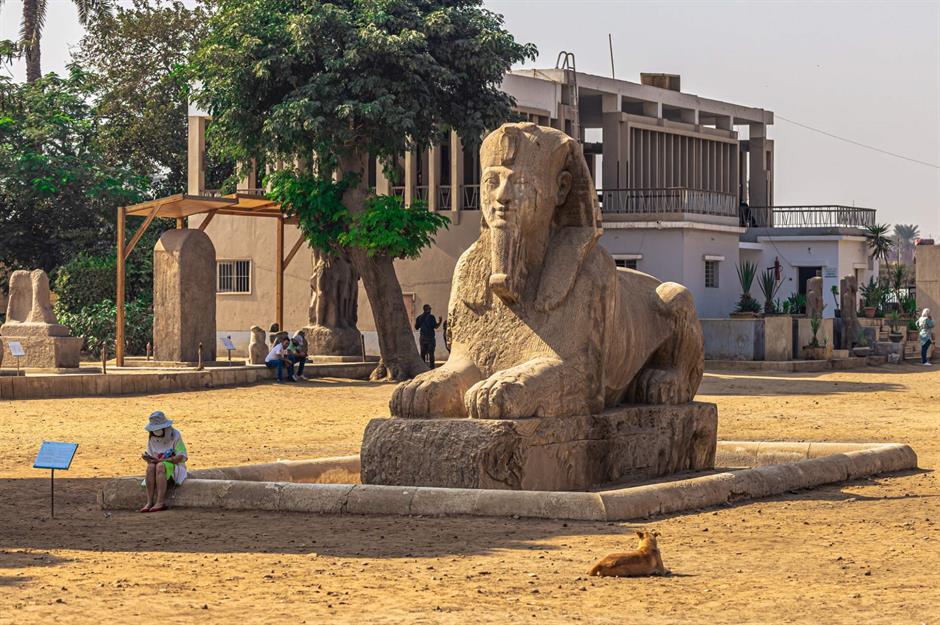
Egypt is a hotspot for history fans seeking ancient wonders and Memphis is among its best-preserved ruins. Located around 15 miles (24km) south of Cairo, it was established in 2925 BC by King Menes, and served as the capital of Egypt until it was surpassed by Thebes (modern-day Luxor) in 2240 BC.
Today, the site of the former city contains a large open-air museum where visitors can see what remains, which includes an alabaster sphinx monolith (pictured), a colossus of Rameses II and the Djoser Pyramid.
Great Wall of China, China
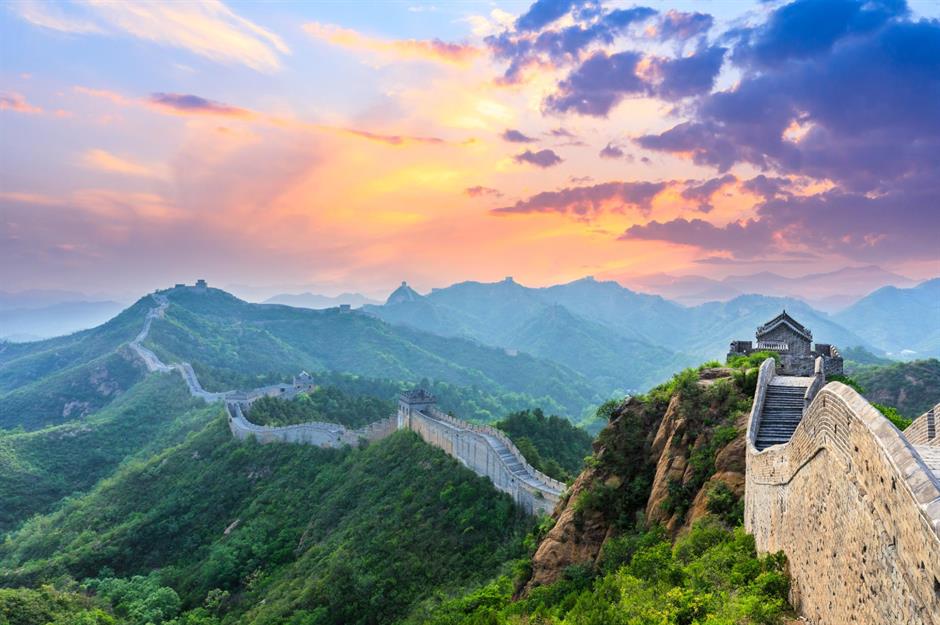
Stretching across some 5,500 miles (8,850km) of northern China and Mongolia, the Great Wall of China is an iconic monument dating back more than 2,000 years. It was built between 680 BC and AD 1681 and was intended to protect China against invaders.
It’s a commonly-repeated myth that the structure can be seen from space: in actual fact, the wall is hard to distinguish from the surrounding stone and soil in most orbital photographs. However, it's still utterly awe-inspiring. Many people choose to go to Mutianyu, one of the best-preserved and most magnificent sections.
Moai statues, Easter Island, Chile
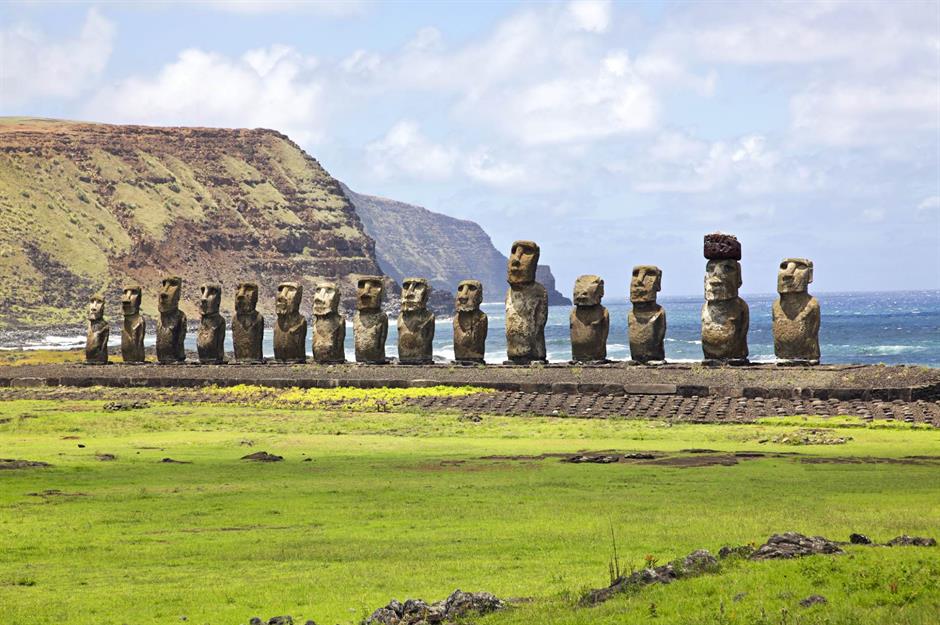
Among the strangest feats of ancient engineering are the Moai statues on Easter Island. It apparently took one year to create each of these 800-plus monolithic statues, using basic stone picks called toki. It’s unclear how they were moved into position – some believe they were rolled up on logs, while others say they were transported upright using ropes.
Recent excavations have also shown that the heads are only part of the giant statues: their bodies are buried underground. Given the island’s remote location, getting here isn’t easy, but some people stop over while visiting Australasia or South America. It’s also possible to book a full-day guided tour.
Angkor Wat, Cambodia

The most recognisable temple in Cambodia, Angkor Wat was constructed in the 12th century by King Suryavarman II and was used as his burial place when he died. But the temple is far from the only thing to see here.
In fact the entire Angkor Archaeological Park stretches across 154 square miles (400sq km) and contains more than 1,000 buildings, which are considered the best surviving examples of Khmer art and architecture. It’s best to visit at sunrise, when the weather is a little cooler and the park is less crowded, and allow around half a day to explore.
Palenque, Mexico
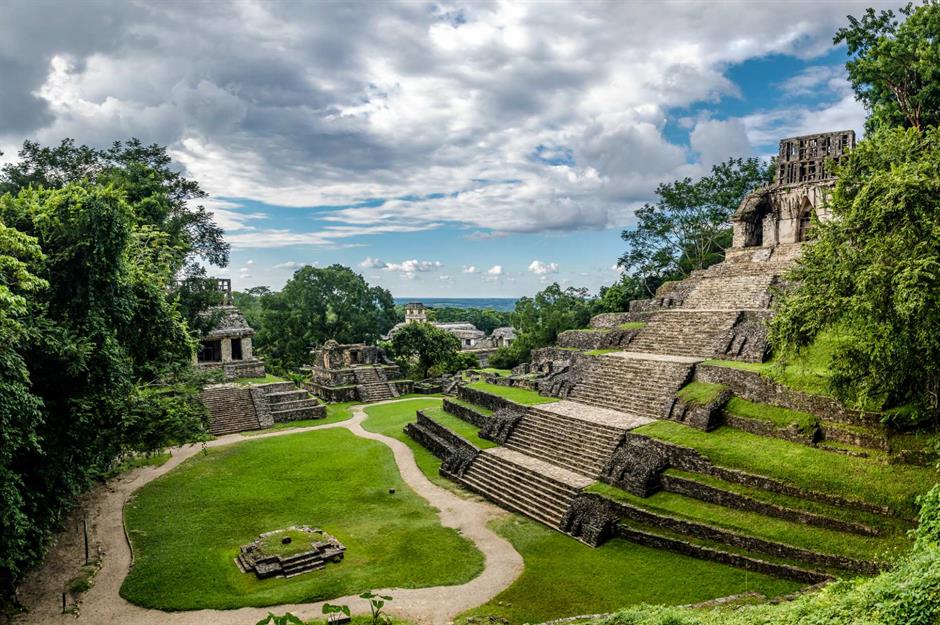
Mexico is home to plenty of enchanting ruins and Palenque, located in Chiapas state, is definitely worth a visit. Tucked amid tropical rainforests you’ll find the remains of a once-prosperous Maya city, which includes the 7th-century Temple of the Inscriptions, built to house the body of King K'inich Janaab Pakal. But just 5% of the ancient city has been excavated, meaning we’re sure to learn more about this ancient kingdom in decades to come.
It’s best visited with the help of a local tour guide – and it’s also worth staying a couple of nights in the town of Palenque while you’re here and visiting the stunning Roberto Barrios waterfalls too.
Skellig Michael, Ireland
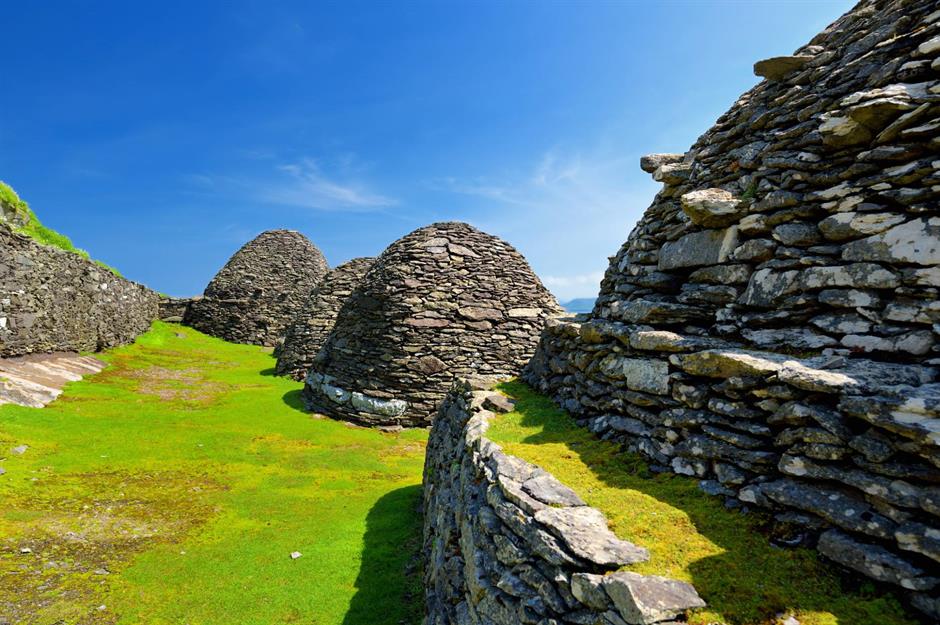
Located around eight miles (12km) off the coast of the Iveragh Peninsula in County Kerry, Skellig Michael is a rugged isle topped by a monastic settlement which is believed to date back to the 6th century. Monks lived here until the 13th century, when they were driven back to the mainland by harsh weather conditions.
More recently, Skellig Michael portrayed Luke Skywalker's beloved island sanctuary, on the planet Ahch-To, in the Star Wars saga. The smaller island of Little Skellig can be seen in the distance. Both can be visited on boat tours, most of which depart from Portmagee marina.
Pyramids of Giza, Egypt
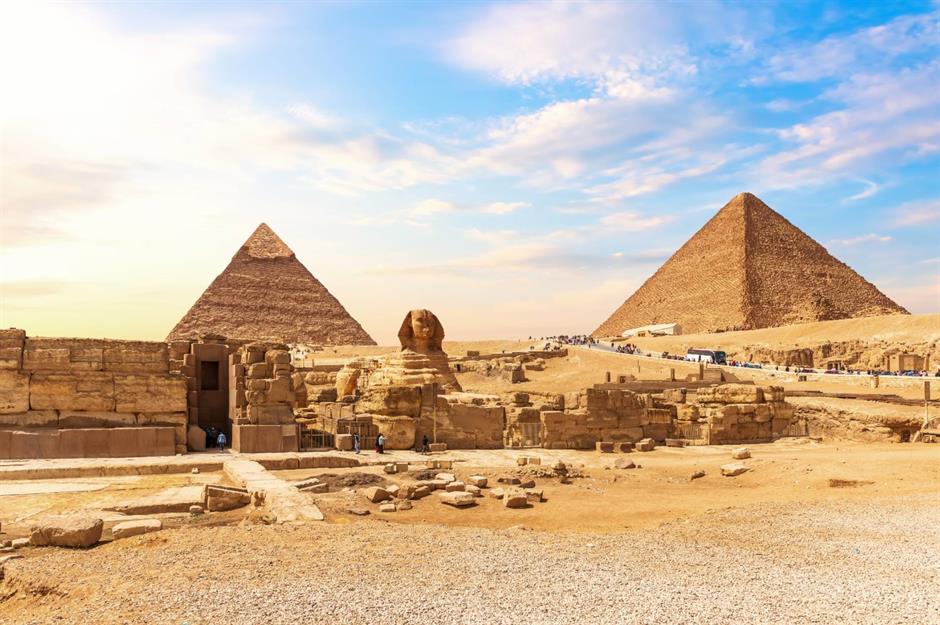
Three mighty pyramids can be found at the site of Giza in northern Egypt. The largest, the Great Pyramid, originally stood at 482 feet (147m) and was constructed by King Khufu between 2550 and 2490 BC, using a whopping 2.3 million stone blocks.
Khafre is the second largest and was built by King Khafre (2558-2532 BC), Khufu’s son – it’s widely believed that the Sphinx standing outside was built for Khafre too. Finally there’s Menkaure, standing at just 213 feet (65m) tall, which was completed in the 26th century BC.
Petra, Jordan
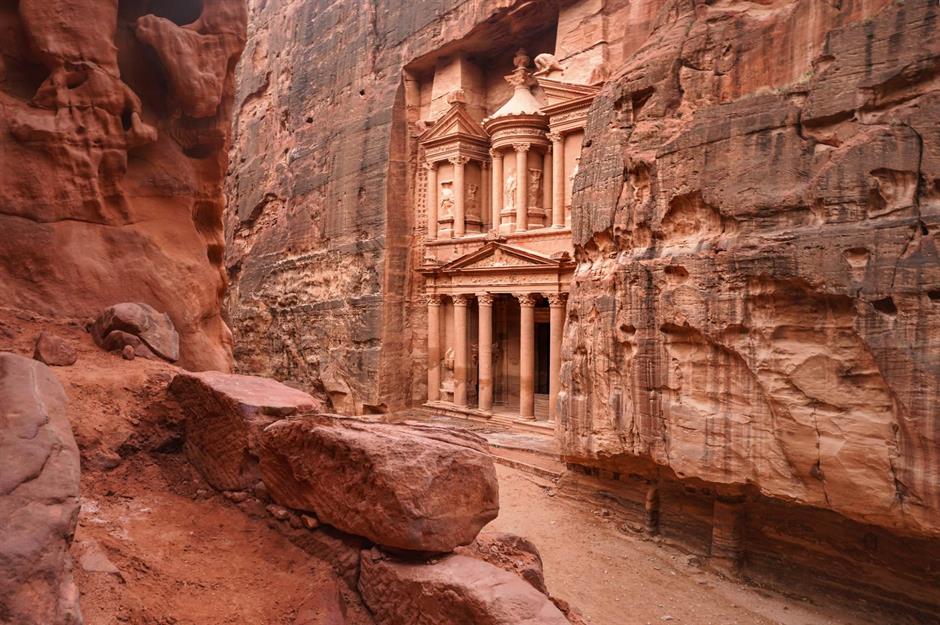
Hidden among the rugged desert landscapes of southwestern Jordan, Petra is an ancient city that was carved into the rock more than 2,000 years ago by the Nabataeans (a nomadic tribe who eventually settled) and it became the capital of their prosperous empire.
The most famous structure is the Treasury (pictured), a 131-foot-high (40m) monument complete with columns and intricate carvings, whose exact function is still unknown to experts. Petra Archaeological Park is roughly a three-hour drive from the capital, Amman, and two hours from Wadi Rum.
Hadrian’s Wall, England, UK

Stretching coast-to-coast across northern England, this mighty wall was constructed by Emperor Hadrian in AD122 to guard the untamed north-west frontier of the Roman Empire. It followed the contours of the wild, dramatic landscape and was dotted with forts, spikes, ditches and earthworks.
Just over 900 years later, many of the important forts remain, as well as sections of the wall and Vindolanda, an exceptionally preserved site with ongoing excavations and a museum. You can also walk the 84-mile (135km) Hadrian's Wall Path, a trail that follows the wall for most of its length.
Machu Picchu, Peru
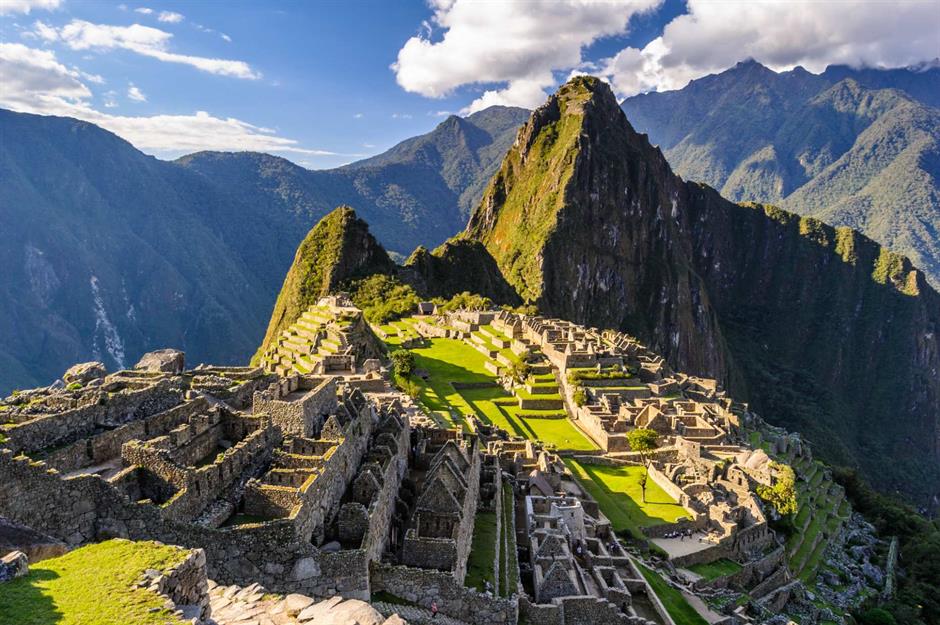
Considered South America’s most significant archaeological site, Machu Picchu astounds all who visit. It's thought that the emperor Pachacutec built the soaring 'Citadel in the Clouds' in the 15th century.
The Inca city is the last stop on the four-day Inca Trail hike, but it can also be visited from Cusco: hop aboard the train to Aguas Caliente and enjoy some spectacular scenery on the three-and-a-half-hour journey, which winds its way through verdant rainforests.
Karnak, Egypt
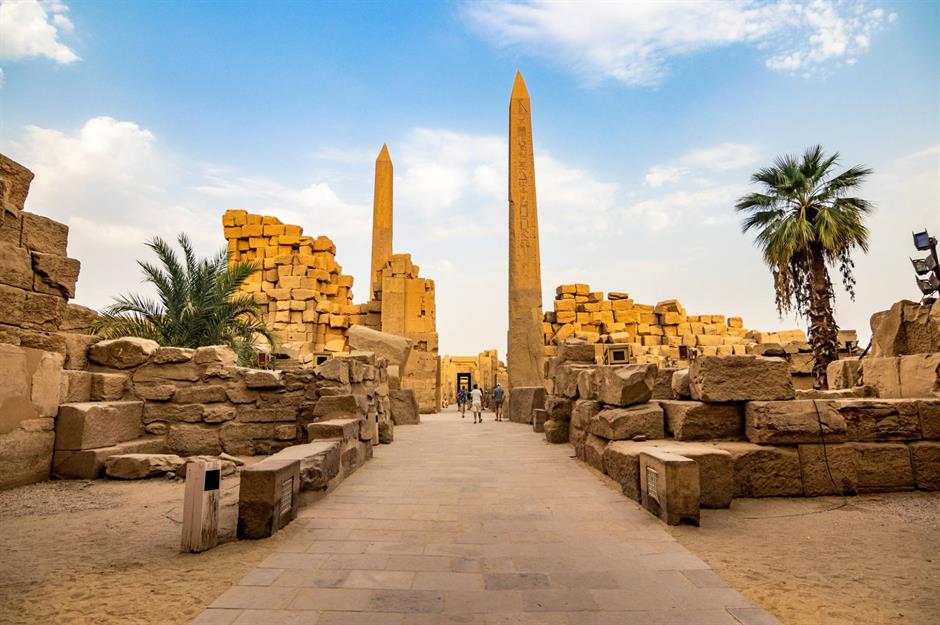
Located in Luxor, the capital of ancient Egypt, Karnak is a fascinating temple complex that took more than 1,000 years to build. The bulk of construction work took place between the 12th and 20th Dynasties – at its peak, it was the largest and most significant sacred site in the country.
Among the impressive structures to gaze at are the Temple of Amun-Re, which was believed to be where the prolific sun deity lived on Earth, and the Great Hypostyle Hall, a jaw-dropping site filled with intricately carved columns. Allow three to four hours to walk around the entire complex.
Bagan, Myanmar

The most memorable time to see Bagan is at sunrise or sunset, when the ancient peaks of this sprawling temple complex are illuminated by a soft glow – you can even take a hot air balloon ride for a truly special experience.
This site, which sits on the fertile plains of the Irrawaddy River delta, is composed of more than 1,000 red-brick temples, pagodas, palaces and monasteries, which were built between 1057 and 1287 AD. Sadly in 2016, a magnitude 6.8 earthquake struck the site and close to 400 monuments were damaged, with restoration taking several years.
Jerash, Jordan
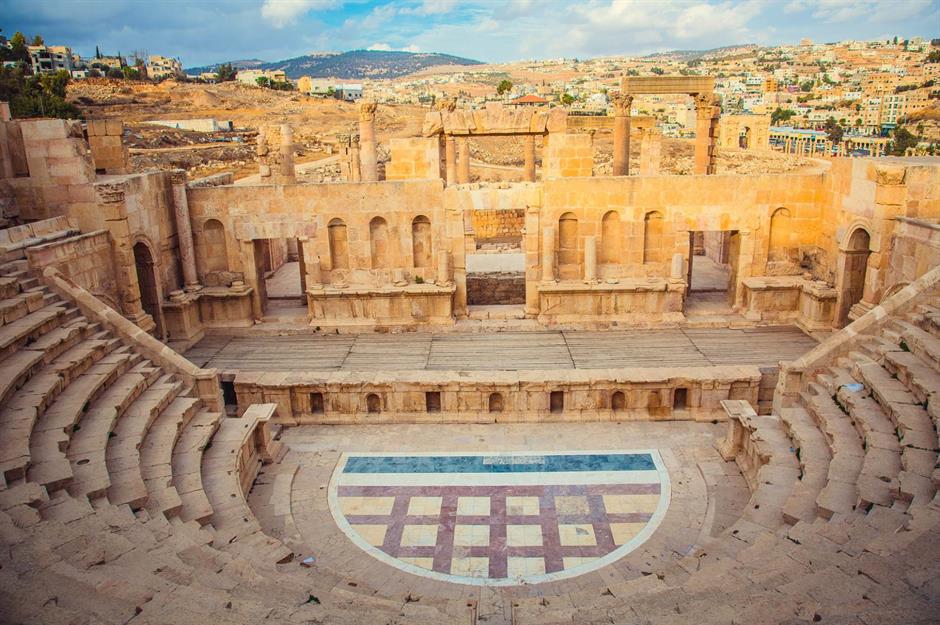
Although sometimes dwarfed by the popular site of Petra, Jerash is certainly worth exploring if you plan to visit Jordan. This impressive ancient city is best known for its Roman ruins, which include giant ceremonial gates, soaring temples, colonnade-filled streets, grand squares and city walls.
Yet the site has actually been settled since Neolithic times, with an unbroken chain of human settlement dating back more than 6,500 years. Located less than an hour’s drive from Amman, Jerash can easily be visited by bus, taxi or on an organised tour.
Ephesus, Turkey
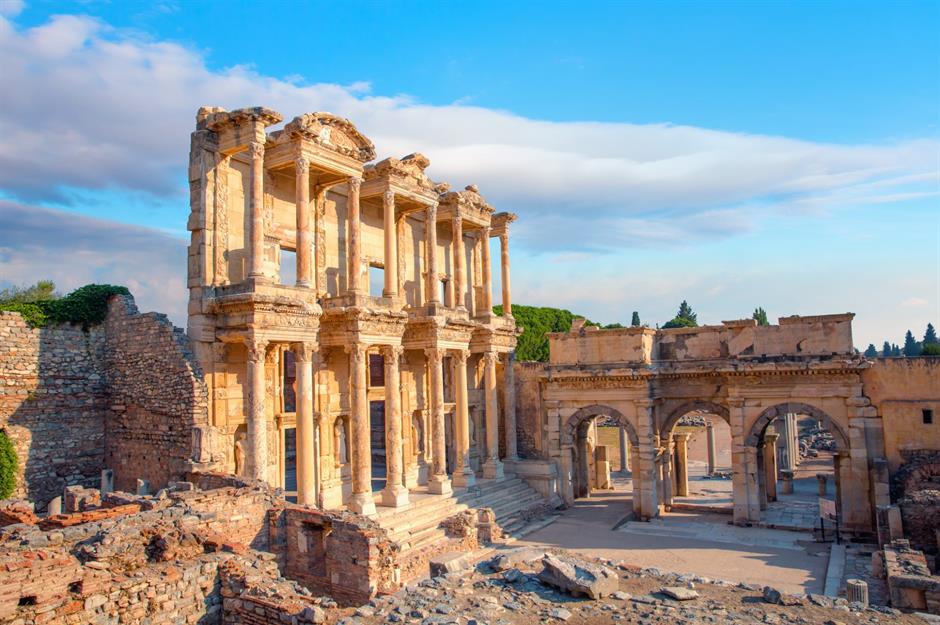
Located in western Turkey, around 50 miles (80km) south of Izmir, Ephesus is the Mediterranean’s most complete Greco-Roman city and was once its biggest trading hub. It was founded in the 10th century BC and became the first city of Roman Asia in 133 BC under Augustus Caesar.
The most striking ruin here today is the Temple of Artemis, one of the Seven Wonders of the Ancient World. You can also see the facade of the Library of Celsus, which was destroyed during the Goth invasion in AD 262, but was rebuilt by archaeologists in the 1970s.
Terracotta Army, China
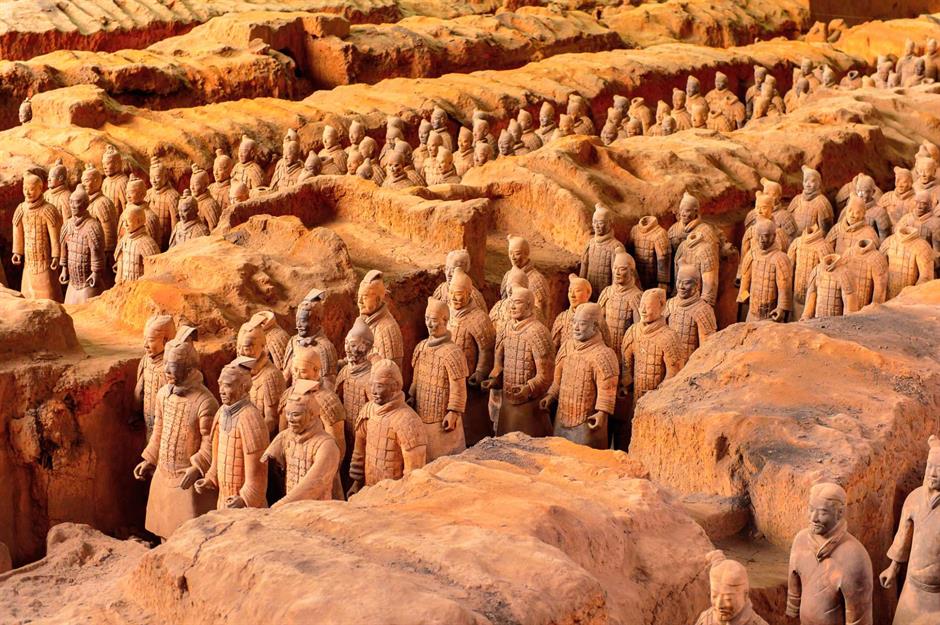
Dating back some 2,200 years, the collection of 8,000 life-size terracotta figures in Xi’an is among China’s most impressive – and intriguing – ancient wonders. Built to represent the troops of the country’s first emperor, Qin Shi Huang, the soldiers were only discovered in 1974, lying in the extensive subterranean vaults beneath the tomb of this enigmatic ruler.
Each figure is slightly different and it’s even thought that their facial features were made to represent the workman who created them. It’s difficult to avoid the crowds at this popular site, but it's best to head to the museum when it opens at 8:30am and take a guided tour of the statue-filled pits.
Ellora Caves, India
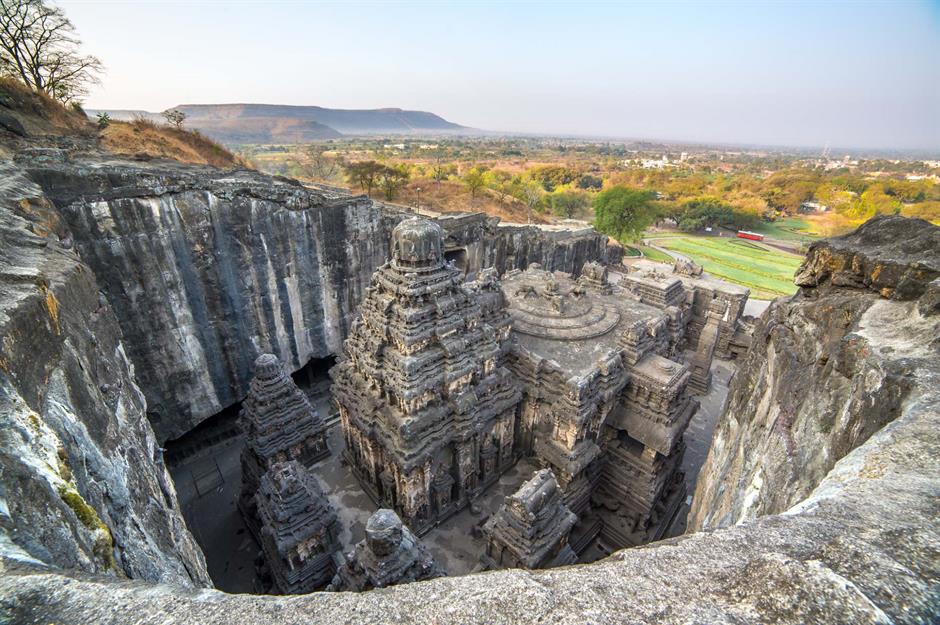
Hindus, Buddhists and Jains have worshipped at the magnificent Ellora Caves for thousands of years. Carved from volcanic basalt stone, the sprawling site was formed somewhere between AD 550 and 750 and is home to Kailasa Temple, the largest rock-cut monument in the world.
But with 34 caves in total open to the public, each containing elaborate carvings of gods, flowers and elephants, there are plenty of spots to explore. Take a guided tour from the city of Aurangabad (a 45-minute drive away).
Pompeii, Italy
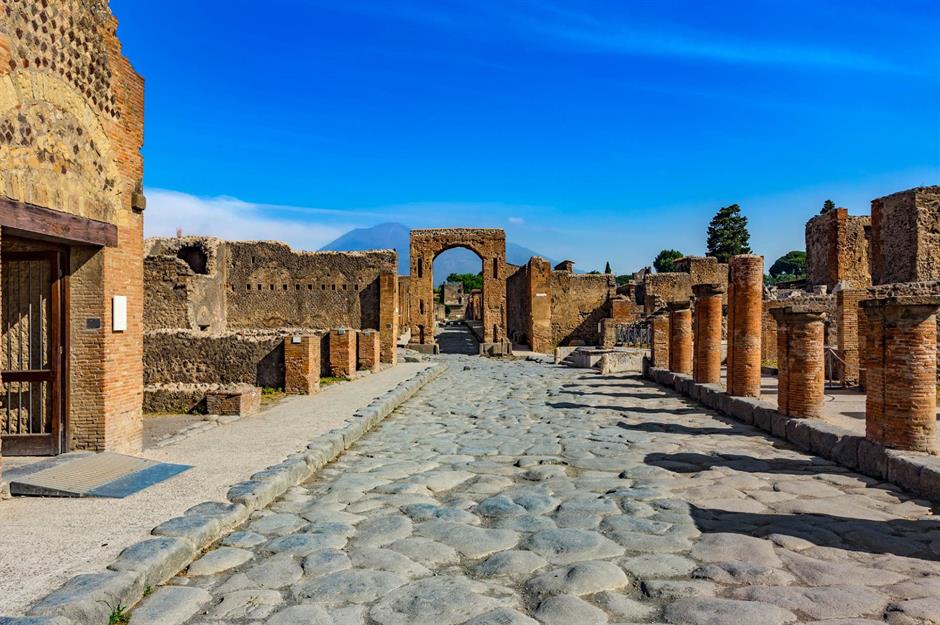
Few could fail to be moved by the haunting ruins of Pompeii, the once-prosperous Roman city that was all but destroyed by the eruption of Mount Vesuvius in AD 79. The site, which is located around 14 miles (23km) southeast of Naples, was buried beneath a blanket of ash for centuries, before being discovered by archaeologists in the 18th century.
Today, the ancient city holds a wealth of treasures, from buildings and squares to art and artefacts, as well as the haunting remains of those killed by the eruption. Depending how long you have, there are two, four and seven-hour itineraries for visiting the ruins.
Ollantaytambo, Peru
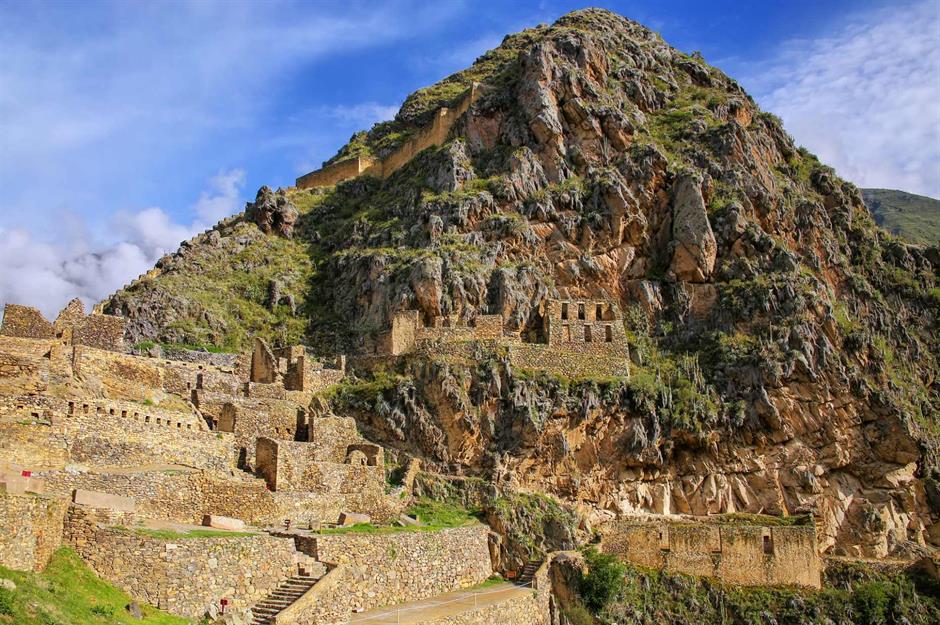
Situated at the beginning of the Inca Trail, Ollantaytambo is one of Peru’s best-preserved Inca ruins and contains some of the oldest continuously occupied buildings in South America. The impressive city is comprised of temples, fortresses and Incan storehouses (qollqa) which are built onto the Pinkuylluna mountain.
Visit later in the day, once the crowds doing the Inca Trail have lessened, so you'll have more space to wander through the well-preserved cobbled streets.
Sigiriya, Sri Lanka
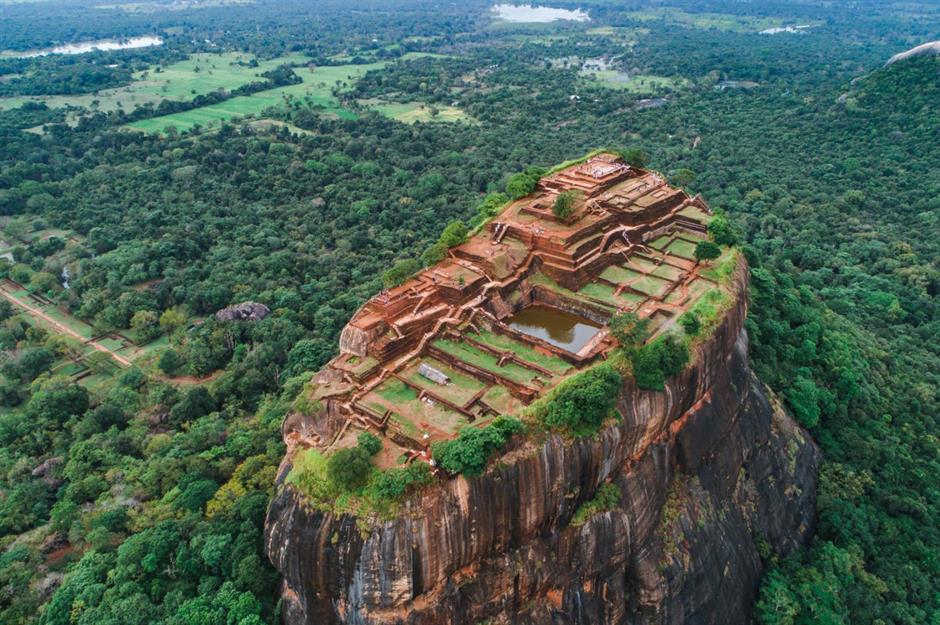
Among the most spellbinding sights in Sri Lanka is Sigiriya, an ancient fortress constructed atop a huge monolith in the country’s northeastern plains. Built by King Kashyapa I in the 5th century AD, the site served as a Buddhist monastery for almost a thousand years, before being abandoned in the 14th century.
The only way to access it is by climbing the 1,200 steps that snake up the 656-foot (200m) rock, with the last section of the ascent marked by a pair of stone lion's paws. The views from the top are more than worth the climb – visit as early as you can to beat the crowds.
Mesa Verde, Colorado, USA
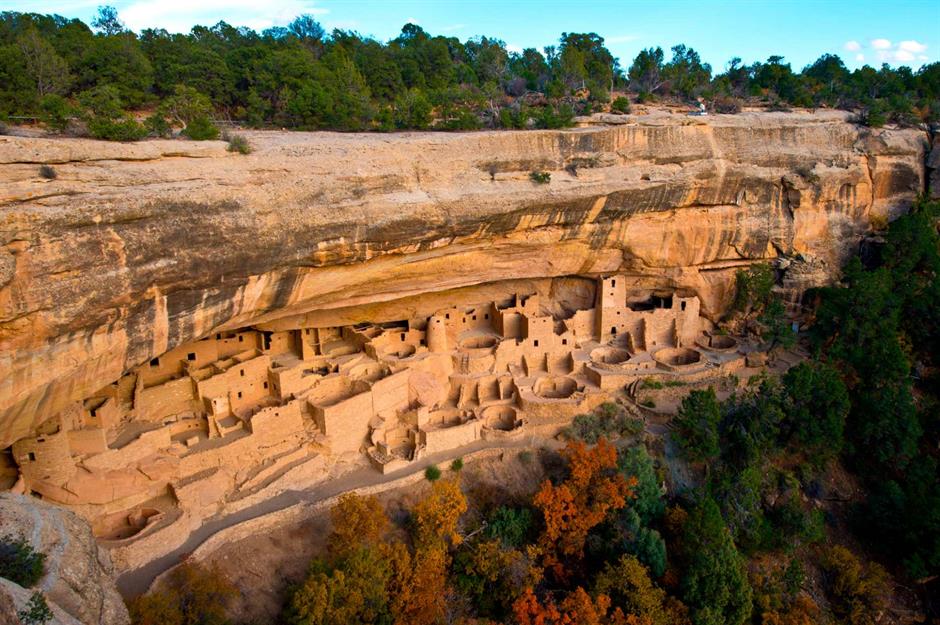
Cradled within a sandstone alcove in Colorado’s Mesa Verde National Park, these intricate cliff dwellings are among the best preserved in North America. They were built by ancient Puebloan people beginning in around AD 750, and inhabited for more than 700 years before being abandoned in the 13th century.
Today, there are an array of structures to see, from small clifftop houses to palaces with more than 150 rooms. To get up close to the ruins, book a guided 45-minute tour with a park ranger, running from May to October each year.
Cappadocia, Turkey

Synonymous with the multi-coloured hot air balloons that fill its skies at sunrise, Cappadocia is a landscape that looks like it belongs in a fairy tale. This unmissable wonder, located on a volcanic plateau in eastern Anatolia, is home to an amazing landscape of wind-sculpted towers, cones and caverns.
During the Byzantine and Islamic eras, churches and underground tunnel complexes were carved into the rock, which means it’s also an incredible place to learn about the human history of this stunning region.
Luxor Temple, Egypt
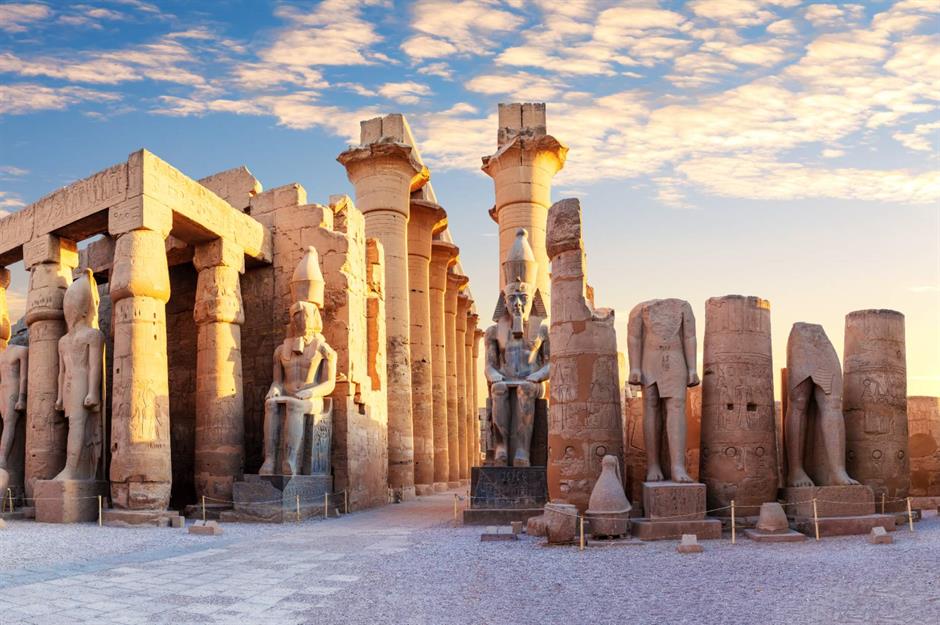
Among the most famous shrines in all of Egypt, the Luxor Temple is a triumph of ancient engineering. Founded in around 1400 BC, the colossal complex was primarily built by two pharaohs, Amenhotep III and Ramesses II, but Tutankhamun and Alexander the Great are said to have also added to the structure during their reigns.
Two towering kings stand guard at the entrance, while the Hypostyle Hall boasts 32 impressive carved columns. You can visit independently by taking the sleeper train from Cairo, Alexandria or Aswan, or by ferry if you’re coming from the west. Be sure to book a tour with a local guide when you arrive.
Imperial Baths of Trier, Germany

Trier is the oldest city in Germany, founded by the Romans in 16 BC. Its Imperial Baths are one of the largest and finest-preserved public bathing complexes outside of Italy’s ancient capital, dating back to the 4th century AD. At that time, Trier was regarded as the ‘Second Rome’, ruled over by the emperor Constantius Chlorus.
The Imperial Baths were intended as the emperor’s gift to the city’s people, though they were never completed to their original specification. Today you can take a tour around the ruins and their underground passageways, as well as seeing the remnants of the drainage system.
L’Anse aux Meadows, Newfoundland and Labrador, Canada
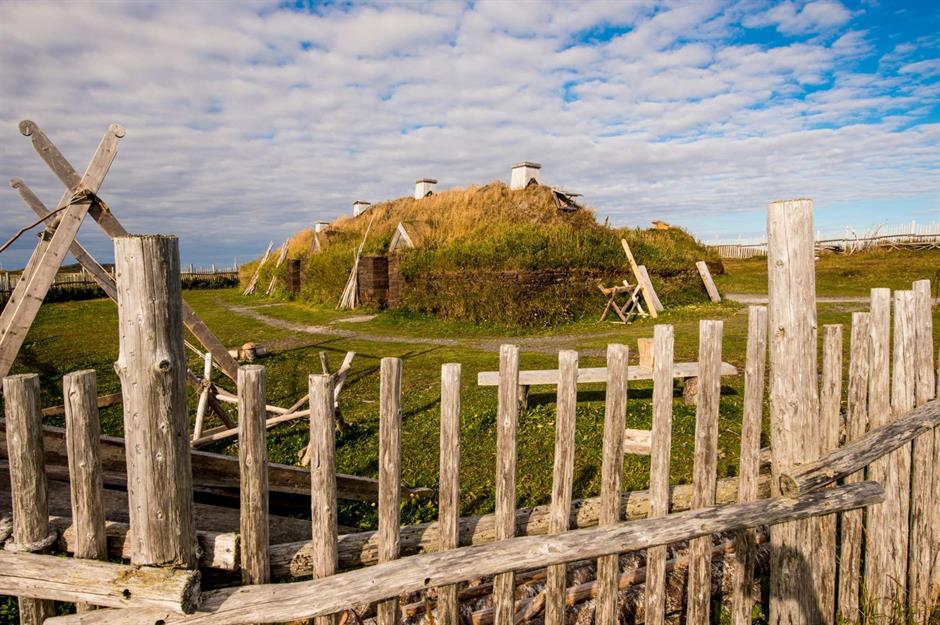
Thought the Vikings only raided and traded across Europe? Think again, because L’Anse aux Meadows holds evidence of these seafaring Scandinavians having reached the shores of North America. Established on the northernmost tip of Newfoundland around AD 1000, it’s the only known Viking settlement on the continent and its earliest built by Europeans.
Now a UNESCO World Heritage Site, visitors to L’Anse aux Meadows will find eight timber-framed turf structures, three reconstructed sod buildings and numerous artefacts excavated from the site. Storytelling evenings are also held here, where tales from the Vinland Sagas and Norse mythology are shared around the kitchen fire.
Skara Brae, Scotland, UK

Set in the wilds of Scotland’s Orkney Islands, Skara Brae is unmatched in Western Europe for the quality of its preserved Stone Age structures. Once home to prehistoric farmers and fisherfolk, this remote village was built around 5,000 years ago, though lay forgotten for centuries until a storm exposed it in 1850.
Visitors today can peer into all but one of Skara Brae’s nine surviving Neolithic houses from a one-way, elevated path that winds around the site. To reach the village, take a ferry from the Scottish mainland to Stromness – from there you can either walk along the coast, cycle or drive.
Teotihuacan, Mexico
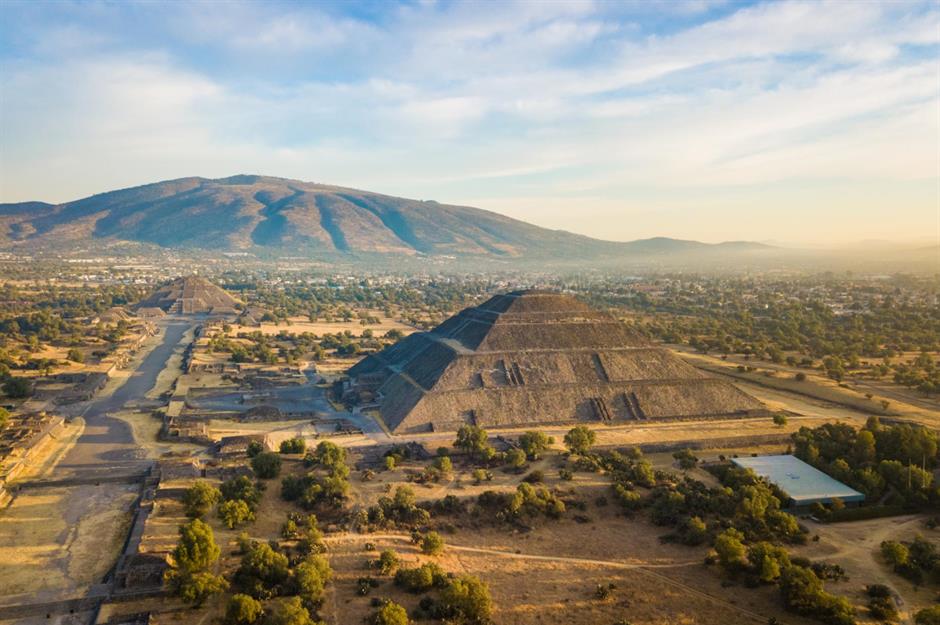
Situated a mere 31 miles (50km) from Mexico City, Teotihuacan is a brilliant day trip from Mexico's capital. This beguiling city was built between the 1st and 7th centuries AD and was inhabited by a pre-Hispanic civilisation, about whom we still know very little. We do know, however, that the former city was a thriving economic and political centre, with some 150,000 people living here at its peak.
Only a small amount of the entire site has been excavated, with points of interest including the 141-foot-tall (43m) Pyramid of the Moon and the 207-foot-tall (53m) Pyramid of the Sun.
Now check out the most impressive ancient temples of the Americas...
Comments
Be the first to comment
Do you want to comment on this article? You need to be signed in for this feature